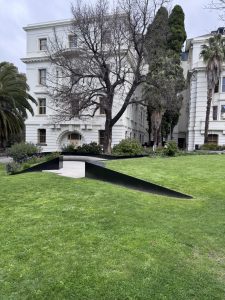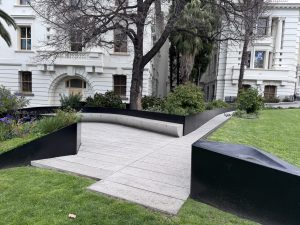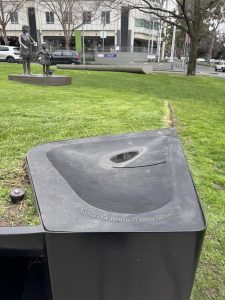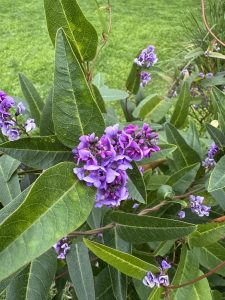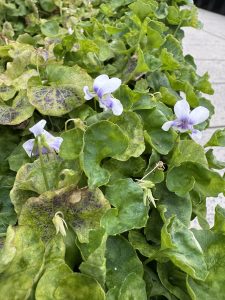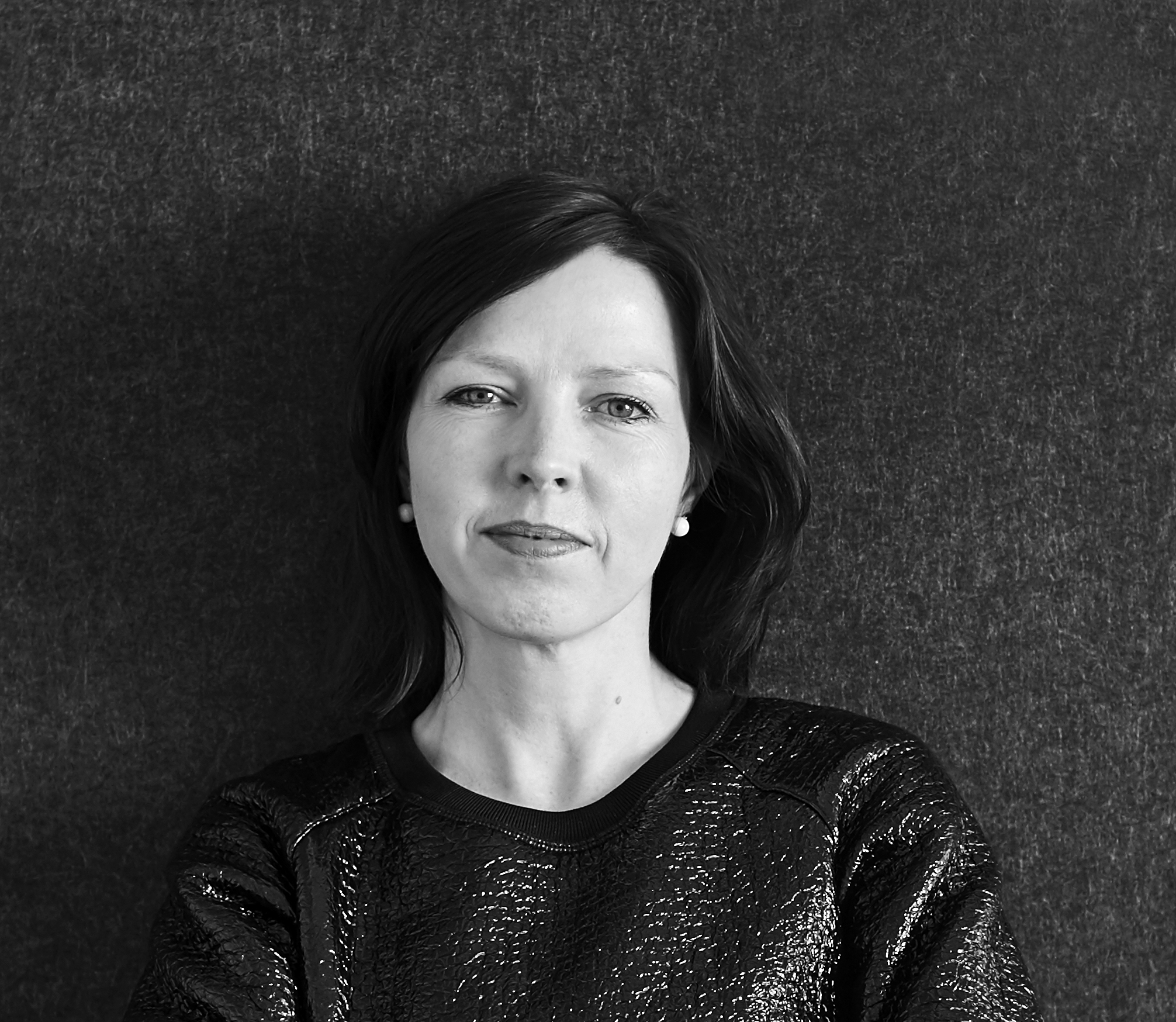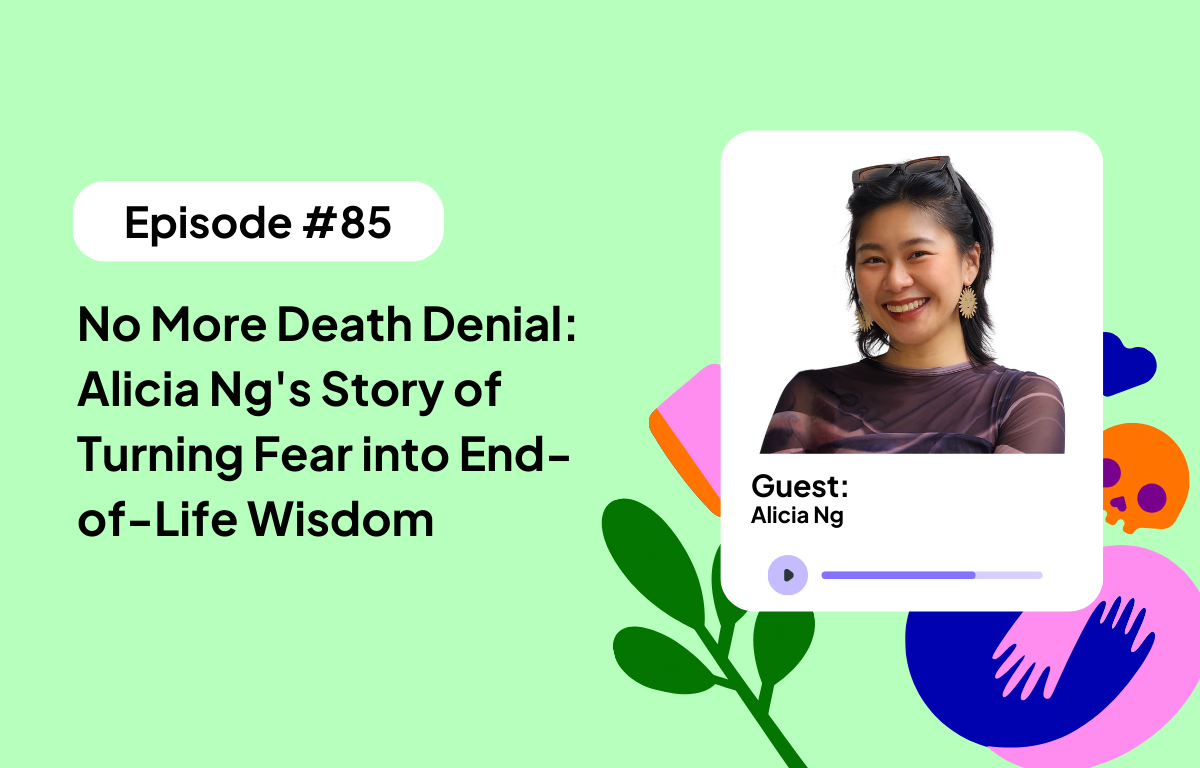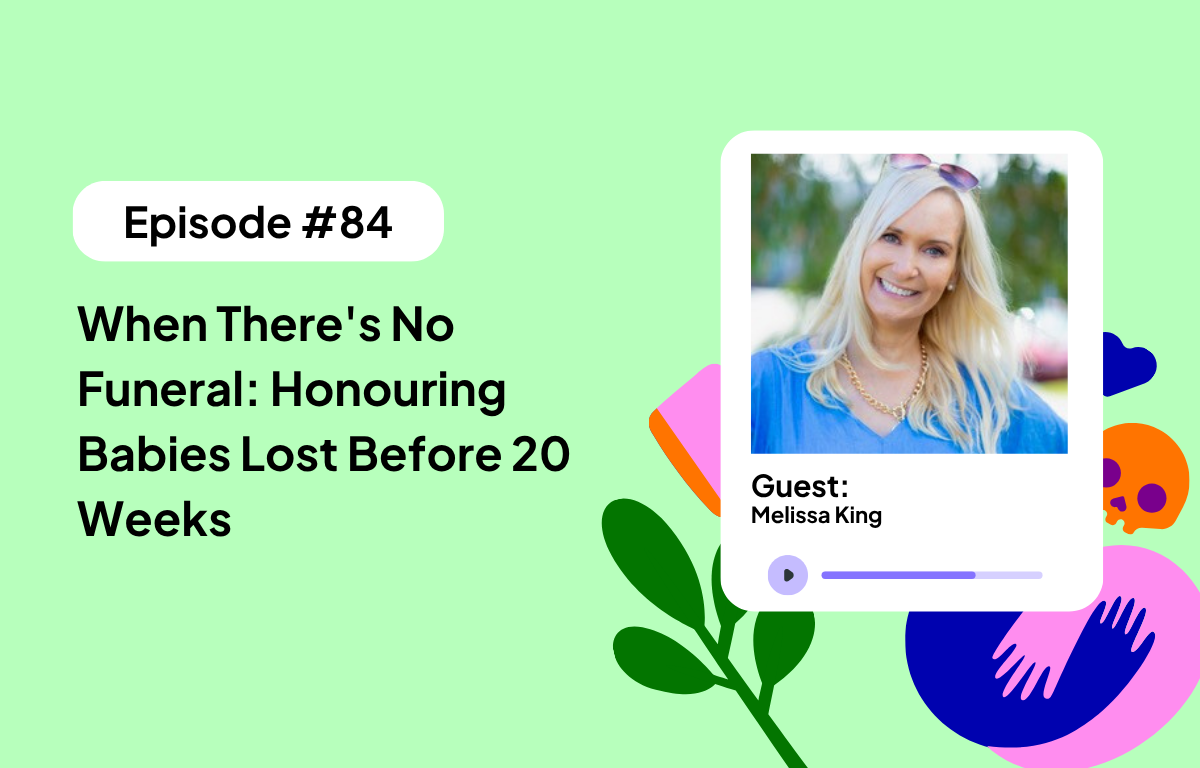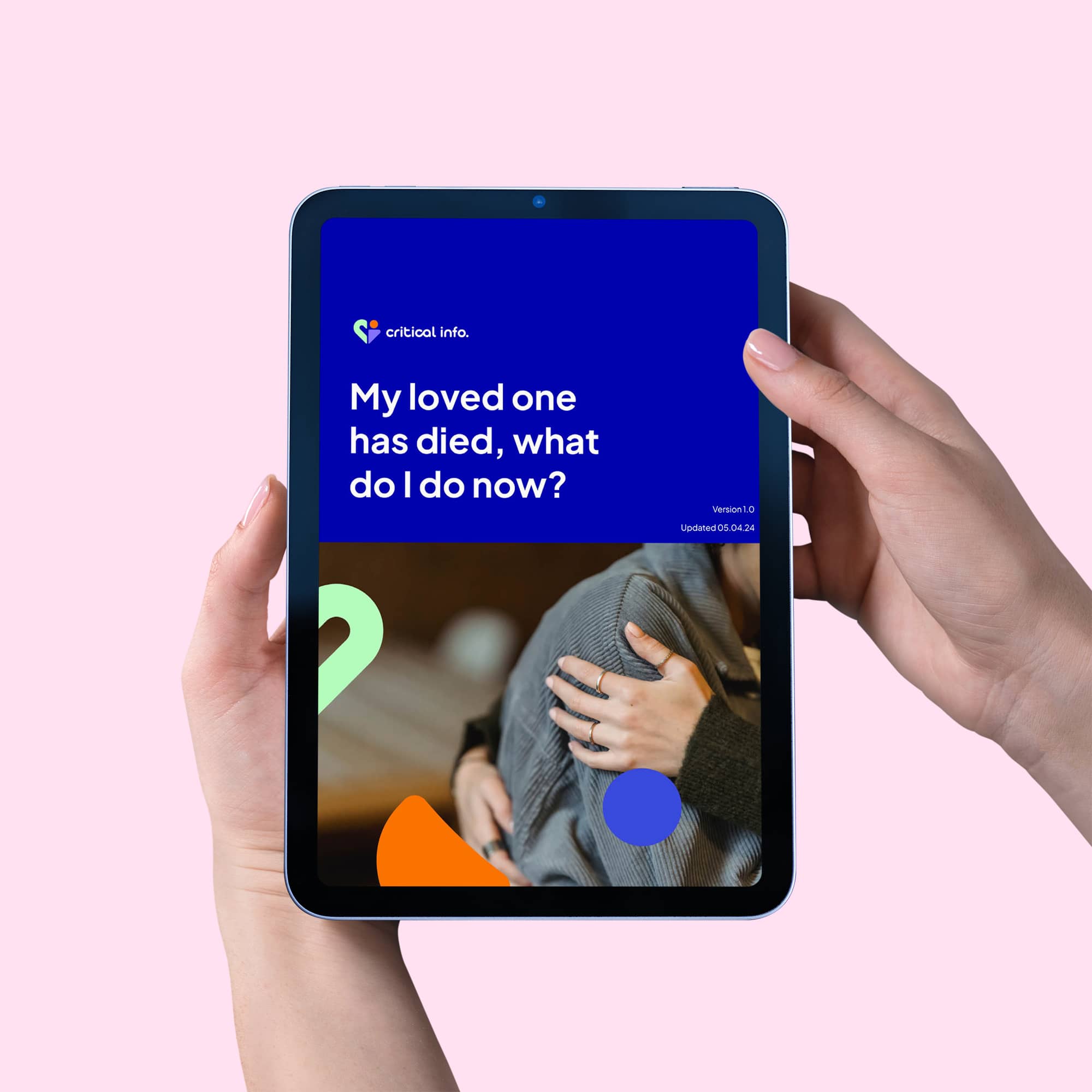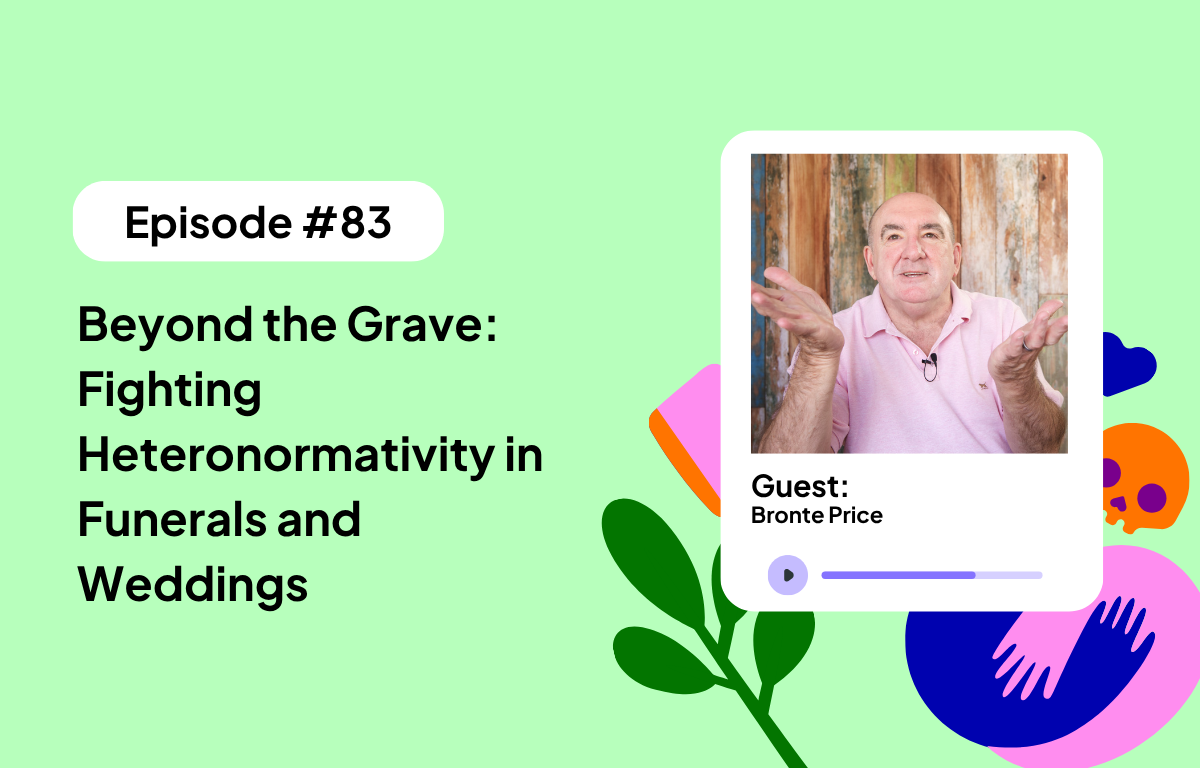Amy Muir: [00:00:00] And so it was sort of this idea of, you know, a balancing act between fragility and strength and this, you know, this understanding that those who are dealing with domestic violence, those who have survived domestic violence, there is a huge amount of resilience that these people are carrying with them.
And that is not to be denied.
Catherine: Welcome to, don't Be Caught Dead. A podcast encouraging open conversations about dying and the death of a loved one. I'm your host, Katherine Ashton, founder of Critical Info, and I'm helping to bring your stories of death back to life because while you may not be ready to die, at least you can be prepared.
Don't be caught dead, acknowledges the lands of the Kulin Nations. And recognizes their connection to land, sea, and community. We pay our respects to their elders [00:01:00] past, present, and emerging, and extend that respect to all Aboriginal and Torres Strait Islander and First Nation peoples around the globe.
Before we begin, a quick note. The audio quality on my side of this conversation is not as clear as usual. Technology was not our friend. On the day of recording. However, the discussion itself was too important and valuable not to share with you, so thank you for your patience in listening past the little imperfections.
Muir's Director Amy Muir holds degrees in both interior design and architecture from RMIT University, ensuring that the practice places. Core value on the holistic crafting of interior and external form. As one established in 2016, the practice engages with a range of projects including residential, public, and institutional [00:02:00] briefs, bringing a sympathetic and strategic attitude to the varying context that they work within.
The practice is underpinned by a firm belief in project-based research that investigates the language of memory and place. Muir has been recognized through state, national, and international Awards, and the work has been widely published locally and internationally. As past Victorian president of the Australian Institute of Architects and as a lecturer at RMIT University, Amy is committed to establishing strong links between.
Teaching and research, architecture, practice, and public advocacy. Thank you so much for being with us today, Amy.
Amy Muir: Well, thank you, Catherine.
Catherine: Now, Amy, I had the beauty of listening to you speak at a China Remembrance talk that was part of the open house program earlier this year. Mm-hmm. Tell me a little bit about how you got [00:03:00] started in, in design and architecture.
Amy Muir: I think there's always been a fascination in making and you know, sort of surrounded by that. Growing up my father was always sort of tinkering and enjoyed making things and building. He wasn't a builder, but it was certainly something that he enjoyed to do on the weekends and so. I was certainly surrounded by that, and I think architecture was always something that was sort of in the back of my mind, but also really enjoyed drawing and painting and fine art.
And when I was in year 10, I think I went to an open day for RMIT, assuming I would go and look at the architecture course and I became very seduced by the interior design course at the time. And ended up sort of channeling all my energy into studying interior design and did that. And also while I was studying interior design, I went on an exchange to the UK for a year and studied architecture and [00:04:00] then came back and completed my interior design and then went on to study architecture at RMIT, which was really just a sort of a way of.
I suppose formalizing the training I'd had in interior design as well, and it was something that I was very keen to. I suppose the qualification of architecture allowed me to do what I'd been, uh. Trained to do an interior design. So it was, it was a nice thing to be part of. And I think, you know, for me, architecture, there's many aspects to it, but I've always been interested in, I think residential architecture is something that's, you know, it's a really nice thing working with clients directly, but also public architecture, which really talks to how we can contribute to the public realm and you know.
This idea that space sort of becomes something that is for all and it becomes something that inherently got a very generous role to play within society. And that's something that I sort of, I'm really interested in [00:05:00] contributing to as well.
From the work that I've seen you involved with and, and we'll talk more about your involvement in the design of Victoria's family violence memorial, but it seems like you have managed to incorporate a social conscience into your design practice.
Yeah, I think, I mean. To be honest, I think architects are essentially trained in that way. I think where, you know, the degree or the training that we have is a very broad training and it understands sort of the impact that architecture has historically and on our built environment and that it's impacted from a historical point of view, it's impacted by politics.
It's impacted by the way that society evolves. And so I think we're very much trained to sort of have that lens to see the world in a particular way. And it [00:06:00] becomes, I think, this idea of advocacy and how we can talk to the world in a particular way. I think we feel, you know, I'm, I'm talking collectively, but I think we all feel very passionate about how the world can evolve through architecture and, and to be a better place rather than one that's obviously suffering.
How we can do that. You know, we're only architects so we have a limited capacity to be able to do that. But I think there is definitely a social conscience that we carry in our role as architects
Catherine: and perhaps it's a, a good opportunity to introduce the background to the family Violence memorial. 'cause from my experience working, you know, at Royal Botanic Garden, I certainly understand all the annual ailments.
In relation to architecture from a landscape perspective. Mm-hmm. It is quite fascinating just how much you have to take into, you know, into the brief when you're actually designing [00:07:00] something. So can you talk us through the process about how that first came? Mm-hmm. To your retention? And then, and walk us through how it evolved during that period.
Amy Muir: Hmm. So, mark Jakes from Open Work and myself, we, our practices share a design studio in the city and we've were, and have and do collaborate on projects together. But this brief came to Mark as a landscape architect. But from my perspective, I'd sort of been doing a lot of research for many years on memorialization and Mark and I had sort of had many conversations around a shared passion for cemeteries and you know, that lovely in-between space, between architecture and landscape and how we sort of understand the evolution of the cemetery and how that's evolved over time.
That is a unique. Shared passion that you have with you? Oh yeah. Yeah. [00:08:00] And most definitely. I think, I think, you know, the role of memorialization once again within society is a, it's a very big thing, but it's often sort of put to the side. We often aren't necessarily focused on the cemetery as being a central part of our city making.
And so I think, yeah. You know, so I think that that was, that was definitely a shared conversation. And there's a project in just outside of Barcelona and Spain, equal art cemetery by Rik Morales and Carme pins that I've always been very passionate about for many, many years. And when Mark and I first.
That was one of the projects that we sort of talked about. So yes, shared passion, shared conversations. We also, I think our love of architecture and, and landscape. It is mutual and we don't actually see the boundary between the two. The conversations are, you know, it's very fluid, so sort of talking about disciplines isn't really [00:09:00] what we talk about when we collaborate.
It's, it's a, it's a collaboration across both disciplines and it just becomes very sort of soup like so. Yeah, so that project came to Mark and we decided to submit the tender as a collaboration and we rewarded the tender, which was fantastic, working with the city of Melbourne and also with the Office for women within the Victorian government as well.
And so I think for us. What was great about that project is that it came with a really strong brief from the city of Melbourne. They had done a fair amount of consultation already prior to us coming to the project. Over a number of years, a lot of consultation had already occurred with the Office of Women through understanding, you know, what would be required or what would be desired through a memorial and.
To [00:10:00] effectively talk about the issue of family violence. So we were, we were in a really good position, I suppose, from the very beginning of the project, having that to rely upon as a body of work. Which is really very important when you start a project is that the brief is, is a really good sound brief from the client.
So that was a wonderful starting point. And we also, on our team, we brought in Sarah Lynn Reese, who works at Jackson Clements Borough's Architects, and she is an indigenous advisor. She's a Palawa woman and. She was also on a team, so the three of us were working very closely together, and that allowed us to obviously have cross conversations around obviously the significance of this site.
And also Sarah led us through and along with the, the city of Melbourne, through the conversations with the wary Bunong and Bunurong people. So [00:11:00] that was fundamental to the way that the, the Memorial came about as well. Because that consultation hadn't happened prior to us coming onto the project. And so that, that was a, a very important part of what we felt needed to be brought to the project.
City of Melbourne, obviously were leading that, and that was an important aspect to how they saw the memorial needed to be addressed as well. But yeah.
Catherine: And can you talk through some of the strength activities? You had to take into consideration when you were dealing with family violence. What were some of the learnings that you were taking from that briefing that you were getting and, and noticing that you really had to be, you know, very conscious of moving forward in design?
Amy Muir: Yeah, so one of the very, very important and. Very special moves that the Office for Women and and City of Melbourne made in the [00:12:00] briefing process was that they had established Office of Women, had established a group of victim survivors advisory council, and that council the day that we presented and for the first time and had a meeting for schematic design.
They were in the room. Representatives from that council were in the room. Those representatives were in every meeting right up till the day that we handed the project over at the end of construction. And not only did we establish a really strong working relationship with them, we established a friendship with them and their guidance was.
Completely. I mean, it was invaluable in terms of the design process and the conversations that we were having directly with them and understanding, and I mean, it was such a, a ginormous learning curve for us all to be taken on, and their grace and generosity [00:13:00] was quite extraordinary in terms of leading us through that process.
So that was absolutely fundamental to the success of the project and will remain, will remain so forever. I mean, that, that was yeah, a very important part and a very important move on the, from, you know, the Office for Women, understanding the significance of their, their role and to play. And I would suggest that, you know, when we talk about stakeholder engagement, this is what we want it to look like.
This is what it should be like, you know, moving through a project together and so that there are many voices at the table.
Catherine: And what were some of things that the women who were sharing their lived experience, what, what did you learn from? From what? The stories they had to tell?
Amy Muir: Yeah. Well, there were women and men who had stories to share.
And I think probably the biggest learning for us was that these stories have a [00:14:00] familiar base. They are different, and everyone has a different story to tell and they're drawn together by a commonality, but there's variances in these narratives, which they're all having to carry and support each other, but it's a very, very large burden.
A lot of them are carrying. And I think also this acknowledgement that this is a societal issue, that this isn't an individual issue. This isn't something that we can ignore. It needs to be talked about every day. It needs to be discussed openly and frankly, perpetrators need to be supported and that.
Like every part of society is impacted by this. This isn't just one sector of the society that is dealing with this. This is a very, very broad issue and it's, it's [00:15:00] very ingrained in our society, unfortunately, and it's something that we consciously have to address in order to make. Improvements and in order to make change.
And I think the other thing was that Mark and I came to the project thinking that we could talk about statistics and that that would be a way to talk about the project and to highlight. The complexity of the project, and we were told very quickly that there are no firm statistics associated with family violence.
That it's an immeasurable condition that is unable to be measured at the moment. And that that's, that's a very, sort of shocking, a shocking reality when talking about an issue because I think memorials in general, they're not necessarily defined by a moment in time. They're defining something that has happened in the past, generally speaking, and [00:16:00] so it's very easy to talk about statistics when we talk about memorials in general, but to ban a position where, and we sort of refer to this memorial as a memorial in motion, that it is something that unfortunately is not witnessing an end point to something, but it's acknowledging the existence of a very big issue.
Catherine: That must be tremendously difficult to then how do you design when it's something that's constantly evolving, a constant topic within the media and, and reports that come out. You know, we see on a weekly basis more people affected by family violence every week. And how do you design a memorial when you know, as you were saying.
When we think of memorials, it's something that happened in the past.
Amy Muir: Mm-hmm. This
Catherine: is something that happens every [00:17:00] day.
Amy Muir: Mm-hmm. So I think, I mean, we, you know, initially we really were drawing upon. The context of the site and understanding that, and also drawing upon our research into memorials and the idea of memorialization, how we also, how people need to be in spaces.
And so this idea that if we look at the Shrine of Remembrance, for instance, it needs to cater sometimes for maybe 10 people, sometimes. 15,000 people, sometimes a hundred thousand people. It, it varies. And so the idea that memorials have to sort of accommodate a, a flux, something that is in flux is an important thing to consider.
And I think the opportunity of this site that we saw was that it's on a corner site in East Melbourne and sits adjacent to the treasury building and adjacent to the Commonwealth building and. [00:18:00] That the triangular site and being that sits. Directly opposite to Fitzroy Gardens meant that there was a, a relationship to a, a landscape beyond.
So the relationship to landscape is very important, and we know that as a thing that is inherent in people's ability to heal as well. And that that is becoming, you know, obviously we know that, but the research is telling us that as well, that it is fundamental to the way that we design hospitals. It's fundamental to the way that we think about people being able to connect with landscape, and that that becomes a really important aspect to how we think about memorialization.
And so for us, there were a number of, I mean, there were a number of things that we were having to respond to. One of them as well was that there was a, an existing [00:19:00] memorial on the site when we first came to it, it was a, there was a few significant trees and a park bench and a memorial for that was observing the forced adoption practices and.
We found that memorial had been located near the elm tree that exists on the site, the existing Elm tree, and that memorial had its back facing the Commonwealth Building and. That sort of, this idea that this commonwealth building symbolized for so many people. This land was so, was very contentious for indigenous people.
Its adjacencies to treasury was a problem. You know, in the conversations that we had with the indigenous groups was that this, you know, this is, there will be people who will struggle to come to this [00:20:00] site because of its adjacencies. So. We were very sort of cognizant of, I suppose, the context initially and how we would respond to the context and also the, the lie of the land.
There's a four meter drop across that site, and we also needed to make this very accessible for. People in wheelchairs, children in crayons, the idea is that this space is for everyone to come to. It's for families, it's for perpetrators, it's for people who are there, who know people who who have died as a result of it.
It's for people who are currently suffering as a result of domestic violence. So its accessibility had to be one that was very gentle and inviting. And so there are a number of moves that we made that [00:21:00] allowed for this space to effectively have a room. It's an out, we refer to it as a room, but it's an outdoor room.
And this room is what we refer to as a congregation space, but it's almost a, a horseshoe of a space that's sort of been, that faces back towards the gardens. And that was very deliberate because this idea that you are always facing the Fitzroy Gardens and that, that became. This idea that when we're connecting with landscape, there's the immediate landscape that we have, and then there's the landscape beyond.
And this idea that the gaze beyond is a very important one. And the positioning of the. Memorial as in the congregation space, meant that people could stand up on the raised landscape and look down into that space, but could also then get a long view across and down into the Fitzroy Gardens. And so this idea of the gaze [00:22:00] and the view beyond, we wanted to make that a very accessible aspect of this memorial.
And because of the lie of the land, we were then able to embed. The landscape. And so we talked a lot about this idea of the purple landscape and that purple being, you know, the color and the signifier of domestic violence and. We saw this as a political gesture, one that, you know, throughout the year, this garden would always be in flower And Liz Herbert from open work curated that beautifully in terms of the seasonality of the, the flowering plants.
And so it's always, it's always in flower at some point.
Catherine: Yeah, the choice of the, the plantings to compliment the, the design is really beautiful and, and you know. Really striking also in the color palette that's chosen at the hard landscaping as
Amy Muir: [00:23:00] well. Very, very beautiful. And I think that that, so you'll see the figure of the landscape is essentially to hug the wall of the memorial.
And so this idea that you're cocooned within the landscape and the the steel plate wall. Which sort of quite, sort of delicately, but as a material is very robust. And so it was sort of this idea of, you know, a balancing act between fragility and strength and this, you know, this understanding that those who are dealing with.
Domestic violence, those who have survived domestic violence, there is a huge amount of resilience that these people are carrying with them, and that is not to be denied. And so the steel wall effectively is the immemorial. It is. It defines the memorial. It becomes the figure in the landscape and then the landscape of essentially cocoons the site.
And you'll [00:24:00] also see, because of the lie, the land shifting, you know, by four meters, we struck a datu. And so when you're in the memorial, the wall height is at about 800 mil. And so that was. For us that we define that as being a very sort of comfortable height for people to sit within, for people to stand within, for children to be able to access the space.
And safety is a really imperative thing for this memorial as well. Feeling safe, feeling like you can see. In all directions. So that was important as well. And so this wall at 800 mil then slides outta the landscape and it changes height as you move through the lie of the land, but it's actually the same datu for the entire site.
And so that was very strategic, just from a, a comfort perspective and how people could sit and be within the space.
Catherine: It must have been [00:25:00] challenging, as you said. It's gotta be from a functionality purpose, it has to accommodate, you know, one person that goes there as, as solitary reflection to very large gatherings.
So to design in that respect is, is quite, I'm sure, would've posed quite the challenge that. Can we talk about bitty consultation that share led with the traditional owners of the area and through that process, because a lot of people may be very unfamiliar with what that involves. Mm-hmm. And also what the conversations would be about.
Amy Muir: Yeah. Once again, very, very generous conversations. And the learning curve was. Enormous. So, I mean, Sarah and Sky from City of Melbourne, you know, did a beautiful job of curating those conversations and guiding them. But I think because of the three language groups at that time, they all brought an understanding of what [00:26:00] landscape obviously entailed and meant.
And so there are many, many stories that we were told about the significance of landscape from an indigenous perspective. The thing that was emphasized was. This sense that it's a, once again, it's a societal issue. This isn't an issue that's isolated to a particular sector of the community. It is everywhere.
And I think also what came outta that was this desire for in, in saying that, how do we actually ensure that people understand that this is a shared issue? And that this is shared across every sector of our society. How do we actually ensure that that's communicated in some way? And so we were very, very keen to find sort of a way of.
Talking about that, and in one of the conversations, one of the lines that came up was the law of the [00:27:00] land is to keep people safe. And for us, that really resonated with the idea that the land that we sit on and within is fundamental to understanding how us as people living on indigenous land. Can think about the generosity of those gestures, and that was incredibly powerful.
And it was a statement that we then took back to the working group, so the Victim Survivors Advisory Council, and suggested to them that that became a way of, it became basically. The way of talking across the project to everyone through that statement, and so that became the statement for the memorial.
One of the other things was also the [00:28:00] embedding of ceremony within the design, and so we designed a smoking vessel that's permanently engaged and sits within the design and is embedded within what we refer to as the memorial wall and the memorial wall. As you come down the ramp or the space into the seating area, there's a pleated steel wall.
And that's been designed around sort of a smudging of, we sort of refer to this idea of a collaging and a smudging of the, the architecture that sits adjacent to the site. But it also, we were very cognizant when we were talking about the lack of statistics and this idea of the immeasurable. We were also sort of very cognizant that.
There is no way of really grappling or understanding how we contain this thing or how we define this issue. And so the wall recedes under the land and in one way, and [00:29:00] it's black, so it, it's difficult to see the end point of the, the recesses and the perspective that that sort of generates, but it effectively becomes a way of, you know, receding into the land.
Not being able to perceive the depth of that gesture, but also it has an enormous amount of strength because it's holding the land above. And that land is what holds the people who come to visit the memorial. And so Sarah sort of talked about, we were talking about what is the size of a smoking vessel?
And she said it's, imagine it's the size of. Cradling a baby. And so the smoking vessel, the geometry was born out of the geometry of the wall, but it was also the scale of, you know, this gesture of, you know, cradling a baby. And as you walk down the ramp, the idea is that it sits directly adjacent to the grass area.
And so the [00:30:00] elders that are carrying out the smoking ceremony can stand with their feet on the ground, and those that walk through the memorial can walk through the, the smoke, which is an important part of the, the welcoming ceremony to the site.
Catherine: And having a look at the, the images at the moment, Amy, I, I'm imagining that if there is a, a crowd that is gathered in that space.
Or smoking, especially with the, the circular horseshoe that you are referring to, that sort of gives you a big hug and then you have the perspective of where they would be standing for the smoking ceremony with that sort of cradle that you were referring to, where they would have that, that would be very beautiful because it would be, as you are seated.
Smoke would actually kind of come across you at sort of like your head height. So your whole body would be beautifully cleansed by the smoke. So just the simple detail in that, [00:31:00] in the design is amazing.
Amy Muir: Mm-hmm. Well, I think, I mean, and this is, once again, this is the wonderful thing that is born out of collaboration is that these conversations are cross conversations and prior to.
Starting construction on site. We had a smoking ceremony on site, which was very, very special. And there was a small group of us who attended that. And the ashes that were taken were basically were retained from that smoking ceremony and were given to the fabric, had the, the manufacturers of the concrete pavers and the ashes were put into those pavers.
So the ashes from, from that. Initial welcoming and cleansing of the site were embedded and now embedded back into the memorial, and that for us was sort of a really important gesture as well. And the other thing as well was the decision around the message, [00:32:00] and I haven't got the message. The, the, the text on the memorial plaque, I haven't got it here with me, but that went through, you know, a very, very involved process with the victim survivors, which was very humbling to be part of because it's a very moving, it's very moving statement that is made.
But what was set in that was that. As we acknowledge the law of the land is to keep people safe. So that was the first thing that was written, and it was written in WW and we thought that that was very important. And then on the smoking vessel, the same statement is written, but it's only written in ww.
So we sort of have this anticipation that children might want to know what is written there and that they would do a rubbing on the. On the smoking vessel and that they would need to investigate what that meant. And so for us it wasn't, you know, it's not just about [00:33:00] clarifying, it's also people investigating is part of this.
Which brings me to talk about the, one of the most important things that was communicated by the victim survivors is this role of education and talking about it as a role of education, and that that is fundamental to, as we were saying before, we need to be talking about this every single day, but if we can educate our children to understand what this is, rather than shrouding them from it and not talking about it, but actually openly.
Discussing it, then that will assist with the way that we start to break down some of these barriers, because some of the largest barriers that we've got in front of us is the fact that people don't talk about this. That people are shrouded in shame and embarrassment and don't come forward and.
Continue to live in terrible circumstances because of the embarrassment [00:34:00] and the shame of what they're enduring. And so if we can talk about it more and acknowledge that it isn't shameful, it's a product of a situation that they're in, I think that that would be a very important thing.
Catherine: And what's interesting, when you were talking earlier on Amy.
You corrected me in saying it was women and men that were part of the advisory council of the victim and survivors who spoke to you and, and shared their experience in this process and, and the fact that it's actually been named a family violence memorial and just even your reference there in relation to children being able to do the etchings with the language.
So it really has been very conscious. Even in the design elements to sort of challenge those sort of biases we have that it's a women [00:35:00] only, you know that that's the conversation. So I really like how in by design itself is actually challenging what some of our biases are in society.
Amy Muir: Hmm. And I think, I mean, that was loud and clear in all the conversations that we had with the victim survivors.
That was very evident and it was something that we were carrying, I suppose, with us, that we had to be very cognizant of.
Catherine: And tell me what were some of the hardest. Sort of ethical challenges that you had when you were going through this process because you know you're dealing with the sensitivities of people with lived experience.
You are dealing with traditional owners with their own. So I'm sure there was quite a few you had to negotiate.
Amy Muir: Mm, yeah. To be honest, I think it was acknowledging that what we were sort of tasked to do was a tricky thing to be able to address [00:36:00] everyone's concerns and everyone's grief. And I think one of the, the hardest things that happened was through the acknowledgement that there are no statistics.
And that we don't know everyone's names who have died as a result of family violence. We are not able to put anyone's names or acknowledge any individuals within this memorial because it is an unknown condition. And so if we were to add some people's names to it, then it would be excluding those who hadn't had the the strengths.
To come forward and no one wanted to be in the position where we were excluding anyone. And so that for some, was probably a tricky thing to acknowledge because we wanted this to be a place where people could come and remember those who had passed. And I think there's this thing where, you know, similar to a cemetery where, you know, [00:37:00] we understand that.
The people who are buried at a cemetery haven't necessarily died at that place. But there is a thing with family violence that sometimes it doesn't happen in the home, it happens in other places, and that acknowledgement of someone's place of death is an important thing for those who are dealing with the grief.
So once again, there's a multitude of. Ways that people have experienced this condition. And so that is such a complex thing to be able to try and cater for because it's so nuanced and it's so, it's quite overwhelming. Like if you think about the grief that so many people are carrying, it's a really, really tricky thing.
And I think that would probably have been the hardest thing to manage was really how could we appease. Everyone, and we knew that very quickly that [00:38:00] we weren't ever going to be able to do that. And so it was really about, well, how can we try and cater for society largely and in, not, in a way, in not acknowledging people's names for us, made it even more poignant how difficult this subject is if we can't name everyone.
That's really, really hard and tricky.
Catherine: Tell me, Amy, what were your learnings through the the project about? Domestic violence.
Amy Muir: I think that domestic violence now, which is a very positive thing, is now being recognized in multiple ways. It's not, I think, you know, coercive control now is obviously becoming very apparent in society and that is recognized now as obviously a form of family violence and that that.
It, that in itself has a whole lot of complications [00:39:00] associated with it. And I think the thing with family violence is that it can be a very lonely and quiet, quiet thing. And we may not necessarily be aware of what anyone's experiencing in their personal life despite what they're carrying with them. And so I think it's being more cognizant of how complex.
People's lives are, and that we need to step gently around those who we know and those, and particularly those who we don't know. There was an interesting article the other day, women's Agenda. Were talking about a recent police blitz that they've done in New South Wales over sort of a week and a half ago, and one of the statistics that really.
Stood out to me was that they are currently receiving every three [00:40:00] minutes a report for domestic violence, and this is a very shocking statistic. Given that we know so many people don't report domestic violence, and that is only in New South Wales at the moment. That is currently what is happening in one state in this country.
And that is, that is an extraordinary demand for support of this issue. And there is a lot of silence around. Three minutes is what I would suggest
Catherine: and a clear indication that there, it's, it's a classic iceberg situation where you're only seeing the tiny tip of it at the top, not what's actually really the main issue, which is not what's reported.
Mm-hmm. And [00:41:00] things that we can't see and we're not speaking about.
Amy Muir: Yeah. And I, I just think, I mean, it's great that women's agenda is really highlighting these issues, but it's, it just, we just need to be talking about this more and more and yeah, assisting in every way we possibly can. Because I think the other thing to acknowledge as well is that grief manifests in so many different ways for people.
Certainly there is no rule book for grief. You know, there's, from a psychological point of view, they've got the various steps and stages mapped out, but it doesn't apply. Like that. It doesn't roll itself out like a book is probably what I'm trying to say. And so people's grief that they're caring can be very, very complex.
And that's a, yeah, that's a hard thing for us to sort of all collectively acknowledge. But I think if we can be more compassionate. [00:42:00] And in government acknowledging these issues is, is a very, very significant step forward. And so if I think about this site now, when we came to it, it was such a contentious site.
But now I look at it and I see that this government building is actually, now, it is the custodian of this memorial. It is responsible moving forward for taking responsibility for how society addresses this issue. And so. In a way this sort of, this conclusion with this site, and it's not a conclusion by any means, but I, I think there is something that dynamic now that's been set up on that site between honoring and acknowledging family violence as well as, yeah, the forced adoption practices and the complexity associated with that.
I think that, that it's taken a, a nice little turn in a way.
Catherine: Here you speak, Amy. Certainly [00:43:00] make us realize that the, the challenges around family violence is the fact that we will never know the true statistics because A, it is not a subject that's talked about. Mm-hmm. You know, openly. People don't report, um, their incident of, of family violence. Mm-hmm. So you just talking through those learnings really gives us a real clear picture of the reasons why we will never know.
Mm. Through names associated with family violence in Australia. Something that I, I like when you were talking through the design and the sight lines and the fact that. When you are sitting in the memorial, you look out to a garden, you're not actually looking to a center point that you've focused in the garden, but it's actually more outwards.
Can you [00:44:00] talk us through about that decision process?
Amy Muir: Mm. I think looking out and beyond is a very positive thing. So the other thing as well that you know, this idea that this landscape is purple and ever evolving and shifting and changing. We talked a lot. To the victim survivors about the, the significance of the elm tree.
And this was also for the forced adoption practices. Viewing that elm tree was very important for them as well, and that elm tree essentially signifies a seasonal shift and change, and the idea that landscape. Is ever evolving and ever changing, and yet it talks to the passage of time and this idea that although we can acknowledge and and talk about the complexity of grief, grief is also governed by time to a large extent.
And that this idea that as we move through life, things can become softer and gentler [00:45:00] with time. And so the tree and the, you know, the, the seasonality that comes with that tree is, is a very important aspect to the, of the site and the fact that during summer it provides shade and in winter it provides light.
So I think that, that for us. Only gets amplified even more by the view beyond to the Fitzroy Gardens. And that is sort of the acknowledgement of landscape for us is very, very important. And you know, this idea of the gaze, not necessarily having to focus on what is right in front of you, I think is a, is an important thing.
When we think about, if I think about attending ceremonies. We don't necessarily just focus on the speaker, but we actually look beyond and looking beyond can provide us with comfort and our gaze might pick up on things that provide us with comfort. [00:46:00] And so our hope is that that allowed for a near view and a, and a very far view within that space.
Catherine: That's really lovely. And tell me, given you have obviously. Specialized and researched right in memorials and, and the role of memorialization in cemeteries. What do you see now with sort of the shift you're seeing in memorialization and architecture and design? Where do you see the future moving now?
Amy Muir: I think the wonderful thing is to say that governments are acknowledging the role of memorials as being not necessarily acknowledging lines in the sand, but actually seeing them used to advocate for change.
And that is starting to become more and more and more apparent. Model for, for memorialization, which is fantastic. And we just need more of them. [00:47:00] We just need more of these, you know, these spaces that people can come and be and to sit and you know, and even if they, they aren't necessarily there for the particular cause, they're there because it's a space that they feel comfortable in.
That is great because then they will understand, hopefully, that they will leave with other memories. That they will carry with them that are associated with a learning, and that's what we would hope would occur with memorials. So I think this thing of being able to occupy space, sit within spaces is very important for memorials and that they're no longer, well, I mean, we still have figures and we still sort of, you know, acknowledge and celebrate, you know, a very traditional way of designing memorials through.
You know, statues and figures, but they're, I don't wanna diminish their role within the city, but I would suggest that the type of memorial that is now being [00:48:00] considered to have a bigger political voice is a very important one, and we need to keep encouraging that and supporting that because the evolution of them is providing support to others.
Catherine: I think you've seen a shift in memorialization move from perhaps acknowledging or honoring the shingle figure to more a collective
Amy Muir: experience. I mean, memorials have, you know, they've done both traditionally. They've, you know, in the collective, but the, you know, typically we understand those memorials through wars.
So, you know, the, the acknowledgement of wars or the acknowledgement of death through, you know, the CFA memorial that's just adjacent down in the, the garden's opposite Treasury as well, which is a really beautiful space, but they become really important. They become, they signpost issues, and I think that this is, they're far [00:49:00] more relevant than, you know, just acknowledging moments in time.
I think these, these memorials carry a much larger role than probably what they were once anticipated to do. Which I think is important. I think, you know, if we, uh, you know, having said that, sorry, I'm, I'm really sort of, I'm not articulating what I'm saying particularly well, but I suppose what I'm trying to say, if we think about the role of the, the War Memorial, that was very much a political gesture as much as it was an acknowledgement of those who had fought and lost their lives in the war.
And so that, as an evolution has only occurred through. Those memorials existing in the first place. And so our acknowledgement now is that, well, these need to be spaces that are not just acknowledging death, they're acknowledging a societal issue. And one that we need to address [00:50:00] and one that we need to talk about and one that we need to, you know, not talk about and one that we need to be educated about because the role of the shrine is a form of education daily.
And so it's an evolution I would suggest is where we're currently at
Catherine: Bailey. We can't thank you enough for sharing that amazing story of how. It really evolved over time with the evolution and consultation of the, that particular, you know, Victoria's family violence memorial. It's, it's very insightful to the process and we don't normally get this opportunity to, to really see just what is involved and what consultation looks like and the design considerations that, that go into such an amazing place for people to commemorate or.
Just reflect.
Amy Muir: Oh, thanks Catherine. It's been lovely talking with you.
Catherine: We hope you [00:51:00] enjoyed today's episode of Don't Be Caught Dead, brought to you by Critical Info. If you liked the episode, learn something new, or were touched by a story you heard, we'd love for you to let us know. Send us an email, even tell your friends. Subscribe so you don't miss out on new episodes. If you can spare a few moments, please rate and review us as it helps other people to find the show.
Are you dying to know more? Stay up to date with. Don't be caught Dead by signing up to our newsletter and follow us on social media Head to Don't Be Caught dead.com for more information and loads of resources.
